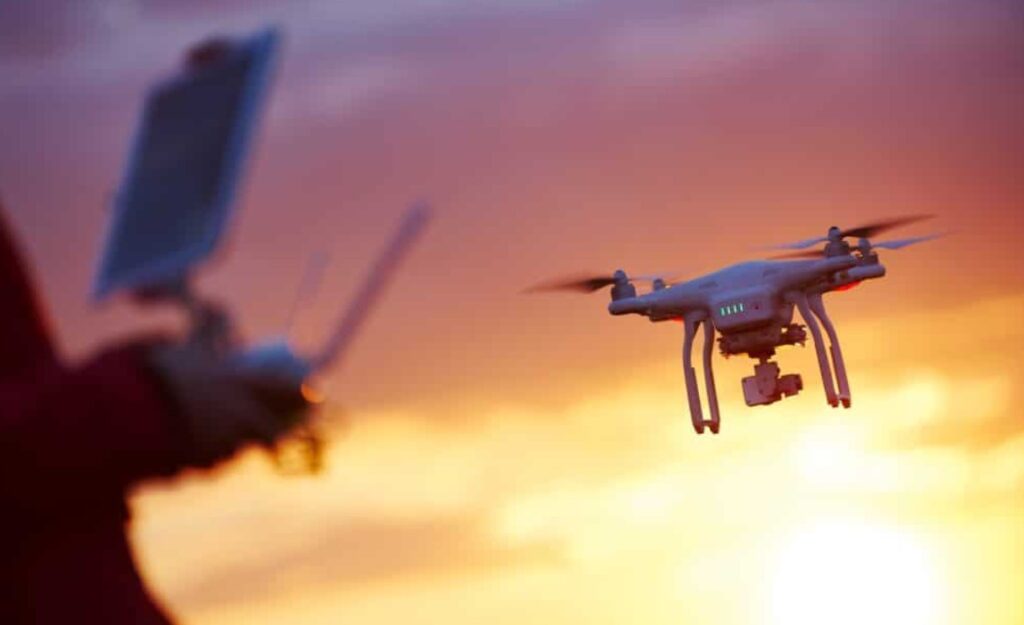Police across the U.S. are putting eyes in the sky, as the adoption of drones for law enforcement emerges as a trend. Forces deploying drones – also called Unmanned Aircraft Systems (UAS) or Unmanned Aerial Vehicles (UAVs) – for surveillance and public safety have promised not to use the flying robots for discriminatory policing.
So far the notion of facial recognition drones remains speculative. But the number of police departments adding drones to their technology arsenal – happening in parallel with a surge in AI-assisted fraud and the development of powerful facial recognition algorithms – makes the prospect of mobile biometric surveillance a plausible possibility.
Rules governing police drone deployments differ across jurisdictions
A host of recent reports shows just how many U.S. police forces use drones. A release from police in New Orleans describes a recent incident in which the use of drones for officer support led to the arrests of two 16-year-olds. The release cites a rule allowing the use of UAS to search for suspects using thermography.
Police in Washington, D.C. also launched a drone program in June. A notice on their website specifies that drones are used only in searches for missing persons, major traffic crash reconstruction, crowd management for large gatherings, and “situational and tactical purposes (such as a barricade).” It also lists things drones cannot be used for: namely, to record a particular person or group based solely on race, skin color, gender, personal appearance, and other identifiable traits.
West Hollywood is launching a one-year pilot program to deploy UAVs within a three mile radius of the city. WeHo Online reports that the drones will operate at altitudes of 300 to 400 feet, and integrate with the city’s new real-time watch center. Drone footage is retained for 30 days, “subject to policy updates and community feedback.” The force says it will not be used for surveillance, but rather as support for first responders to 911 calls.
In San Francisco, a March vote passed Proposition E, which lets law enforcement deploy surveillance cameras and drones. In this case, facial recognition is allowed; Prop E states that “drones and public surveillance cameras installed under these rules could include facial recognition technology and would not require Board approval.”
In Minnesota, an annual report released by the state’s Bureau of Criminal Apprehension (BCA) says police are buying and launching more drones than ever before. A post on the website for the Electronic Frontier Foundation, a nonprofit digital rights group, reports that “Minnesotan law enforcement flew their drones without a warrant 4,326 times in 2023, racking up a state-wide expense of over $1 million. The data show that more was spent on drones last year than in the previous two years combined.”
Facial recognition, AI, drones fly convergent paths in police use
In short, U.S. police now have the ability to patrol lower airspace with drones that are ready to host facial recognition cameras and software, and some have laws that allow the two technologies to be used together. Like drones, facial recognition for law enforcement is seeing increasing uptake. A technology primer from SecurityInformed.com states that “facial recognition technology is rapidly being integrated into law enforcement systems to expedite the identification process.”
When police deploy facial recognition, it usually comes with AI. For instance, New Jersey-based Corsight AI, which performs real-time scanning and post-event analysis, already provides algorithmic facial intelligence services to sheriff’s offices across the country. The technology is established, and, in some cases, revered; a piece in Wired entitled “The Age of the Drone Police is Here” describes how “some police officers joke that visiting the Chula Vista Police Department is like visiting Mecca” – Chula Vista being the first city in the U.S. to launch a Drone as First Responder (DFR) program tied to its 911 emergency service.
The scenario means diligence, fairness and transparency around the use of drones in law enforcement will be required form police forces. Other countries, such as the UK, can provide some context and guidance on regulating police use of biometrics and drones. But it will ultimately come down to the police on the ground, and whether or not they will act in good faith is a standing question. The Wired investigation found that, in Chula Vista, one drone deployment in ten could not be tied to a specific 911 call, and lacked a stated purpose.
Source: Biometric Update
Joel McConvey is a creative content producer and digital specialist who helps people and organizations tell their story across platforms, and meet the challenges of a digital culture that changes quickly and often. Reach him on Twitter @jrmcconvey.
Become a Patron!
Or support us at SubscribeStar
Donate cryptocurrency HERE
Subscribe to Activist Post for truth, peace, and freedom news. Follow us on SoMee, Telegram, HIVE, Minds, MeWe, Twitter – X, Gab, and What Really Happened.
Provide, Protect and Profit from what’s coming! Get a free issue of Counter Markets today.



